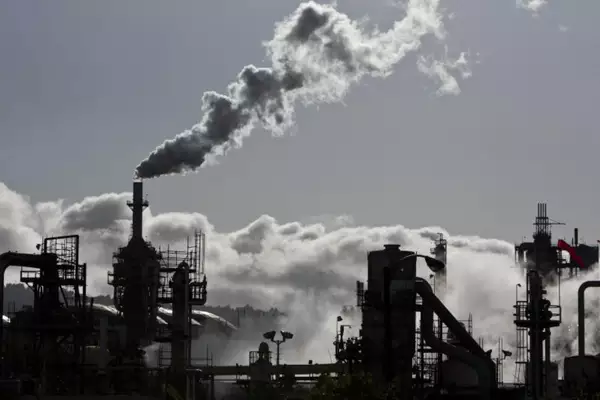A new study reveals that global methane emissions have surged since 2006, with a significant spike since 2020.
Key highlights of the study:
- Anthropogenic methane emissions since the mid-19th century have contributed to approximately 65% of the warming effect attributed to CO2.
- The abrupt rise in methane emission rates in the early 2020s is mainly due to the increased activity in wetlands affected by global warming, complemented by higher fossil fuel usage.
About Methane Emissions
- Methane is considered a short-lived climate pollutant and ranks as the second-largest contributor to global warming after carbon dioxide.
- It has a Global Warming Potential (GWP) of about 28 times greater than CO2, indicating its potent heat-trapping capability.
Sources of Methane Emission:
Natural sources:
- Wetlands are the primary contributors, accounting for 30% of methane emissions.
- Other minor natural sources include wildfires, biomass burning, permafrost, termites, and oceans.
Anthropogenic sources:
- Key contributors include agriculture (20% from livestock, waste management, and rice cultivation), fossil fuel extraction (30%), and other sources like waste management.
Other sources:
- Methane is also emitted from flooded rice paddies, livestock excreta via enteric fermentation, biomass burning, and industrial activities such as landfills and wastewater treatment, where organic decomposition occurs under anaerobic conditions.
- Fertilizer production and transportation are also notable for their methane emissions.
Initiatives to Curb Methane Emissions
Global:
- The Global Methane Pledge aims for a 30% reduction in methane emissions by 2030.
- Observatories and technologies such as EMIT and AVIRIS-NG monitor methane globally.
- Other programs include the Global Methane Initiative and the Methane Alert and Response System (MARS).
India:
- The National Mission on Sustainable Agriculture (NMSA), Direct Seeded Rice & Crop Diversification Programme, and Gobar-Dhan Scheme aim to enhance sustainable farming practices that reduce methane output.
- The National Livestock Mission addresses methane from animal husbandry.
- Harit Dhara (HD) and BS VI Emission Norms are targeted at reducing emissions from agricultural and vehicular sources, respectively.
- The National Action Plan on Climate Change (NAPCC) integrates methane reduction into broader climate strategies.
Ref: Source
| UPSC IAS Preparation Resources | |
| Current Affairs Analysis | Topperspedia |
| GS Shots | Simply Explained |
| Daily Flash Cards | Daily Quiz |
Frequently Asked Question:
What causes the rapid increase in global methane emissions?
The sharp rise is primarily due to the enhanced activity in warming wetlands and increased fossil fuel consumption.
How do methane emissions impact global warming compared to CO2?
Methane has a Global Warming Potential (GWP) approximately 28 times greater than CO2, making it a highly potent greenhouse gas.
What are the main sources of methane emissions worldwide?
Major sources include natural wetlands, agriculture (especially livestock and rice paddies), fossil fuel extraction, and biomass burning.



